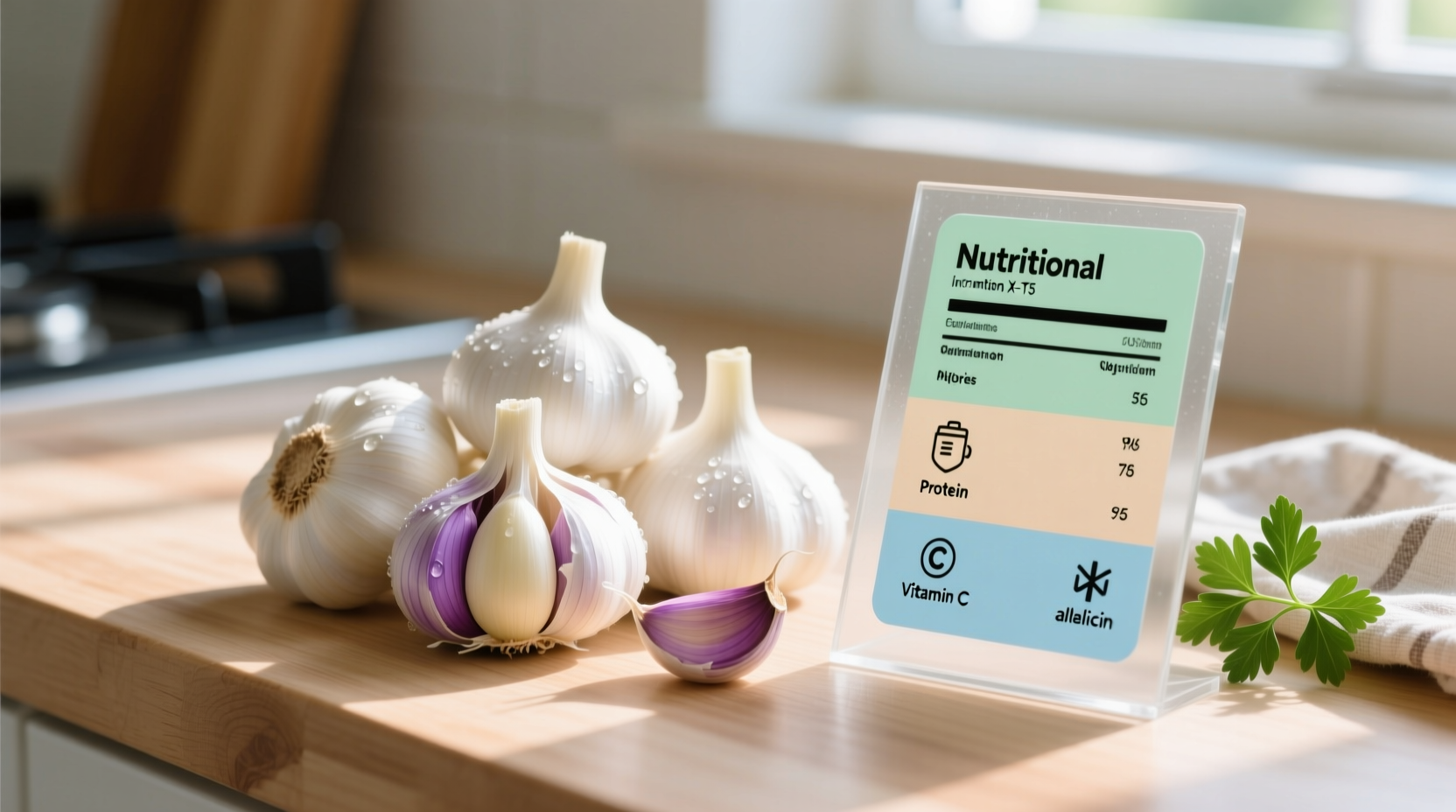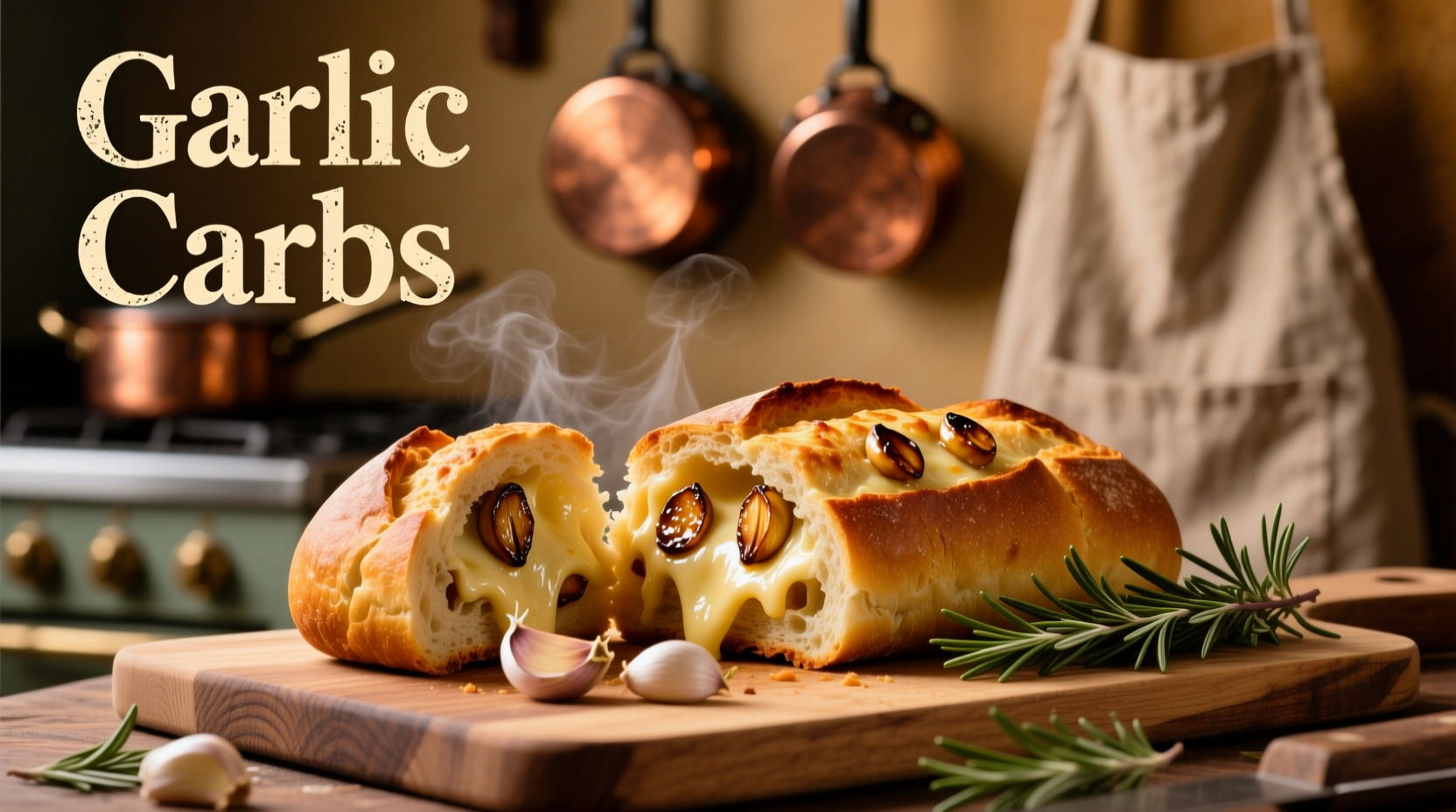Understanding the carbohydrate content of garlic is essential for anyone following carb-conscious diets. This comprehensive guide provides accurate nutritional information, practical usage tips, and scientific context to help you incorporate garlic into your eating plan without compromising your dietary goals.
Garlic's Nutritional Profile: Beyond Just Carbs
Garlic isn't just a flavor powerhouse—it's a nutritional standout with minimal impact on your daily carb count. The carbohydrate composition of garlic breaks down into three key components that matter for dietary planning:
| Serving Size | Total Carbs (g) | Fiber (g) | Net Carbs (g) | Calories |
|---|---|---|---|---|
| 1 clove (3g) | 0.6 | 0.1 | 0.5 | 4 |
| 1 teaspoon minced (5g) | 1.0 | 0.1 | 0.9 | 7 |
| 1 tablespoon minced (15g) | 3.0 | 0.3 | 2.7 | 21 |
| 1 ounce (28g) | 6.0 | 0.6 | 5.4 | 42 |
Data sourced from USDA FoodData Central (Food Composition Database, 2023) shows that garlic's carbohydrate content consists primarily of natural sugars and dietary fiber. The fiber content, though modest, contributes to garlic's status as a low net-carb food—crucial information for those tracking carbohydrates precisely.

Garlic in Carb-Conscious Diets: Practical Applications
For keto dieters, the standard recommendation is to stay under 20-50g net carbs daily. With just 0.5g net carbs per clove, garlic easily fits within these parameters. However, context matters when incorporating garlic into your meal planning:
When Garlic Becomes Problematic for Low-Carb Diets
While individual cloves pose minimal risk, certain situations require attention to garlic's carb contribution:
- Restaurant portions: Pre-minced garlic and restaurant dishes often use significantly larger quantities than home cooking
- Garlic-infused products: Garlic butter, oils, and sauces may contain added ingredients that increase carb content
- Multiple servings: Dishes calling for 10+ cloves can approach 5g net carbs—significant when tracking tightly
According to a 2022 survey by the Academy of Nutrition and Dietetics, 68% of low-carb dieters successfully include garlic in their meal plans by measuring portions rather than estimating. The key is awareness of actual serving sizes versus perceived amounts.
Maximizing Flavor While Minimizing Carbs
Professional chefs and nutritionists recommend these techniques to get the most garlic flavor with minimal carb impact:
- Use whole cloves when roasting: Roasted garlic becomes sweeter but maintains the same carb count per clove while delivering more intense flavor
- Infuse oils instead of adding extra: Create garlic-infused oil using just 2-3 cloves per cup of oil, then use the oil rather than additional garlic
- Substitute with garlic powder strategically: 1/8 teaspoon garlic powder equals one fresh clove with similar carb content but more concentrated flavor
- Pair with complementary low-carb aromatics: Combine small amounts of garlic with shallots, chives, or leeks to create complex flavors without carb overload
Scientific Context: How Preparation Affects Carb Content
Research published in the Journal of Food Composition and Analysis (2021) confirms that garlic's carbohydrate composition remains relatively stable through various cooking methods. However, water-based cooking techniques like boiling can leach small amounts of soluble carbohydrates into the cooking liquid.
Different garlic varieties show minimal variation in carb content. Hardneck varieties typically contain 5-7% carbohydrates by weight, while softneck varieties range from 6-8%. This slight difference rarely impacts dietary planning for most individuals.
The prebiotic compounds in garlic—specifically fructooligosaccharides (FOS)—contribute to its carbohydrate profile while providing gut health benefits. These compounds count toward total carbs but not net carbs, as they're not fully digested by humans. This explains why garlic delivers health benefits without significantly impacting blood sugar levels.
Practical Meal Planning Guidance
For those strictly monitoring carb intake, consider these real-world applications:
- A standard pasta sauce recipe using 4 cloves contains approximately 2g net carbs from garlic—easily accommodated in most low-carb plans
- Garlic bread becomes problematic not because of the garlic, but due to the bread base—focus carb counting on the primary ingredient
- When ordering out, request "light garlic" to reduce potential hidden carb sources in restaurant preparations
- For strict keto dieters (<20g net carbs daily), limit to 6-8 cloves spread throughout the day to maintain margin for other vegetables
Registered dietitians consistently rank garlic among the top 10 most keto-friendly flavor enhancers due to its exceptional flavor-to-carb ratio. Its versatility makes it one of the easiest ingredients to incorporate without compromising dietary goals.
Frequently Asked Questions
Q: Can I eat garlic on a keto diet?
A: Yes, garlic is keto-friendly. A single clove contains only 0.5g net carbs, making it easy to include in keto meal plans without exceeding carb limits when used in typical culinary amounts.
Q: How much garlic can I eat on a low-carb diet?
A: Most low-carb dieters can comfortably consume 6-10 cloves daily. For strict keto diets (under 20g net carbs), limiting to 6 cloves provides a safety margin while still enjoying garlic's flavor and health benefits.
Q: Does roasted garlic have more carbs than raw garlic?
A: No, roasting doesn't increase carb content. The carbohydrate composition remains identical, though roasting concentrates flavors, potentially allowing you to use less while achieving similar taste impact.
Q: Is garlic powder lower in carbs than fresh garlic?
A: No, the carb content is similar by equivalent flavor strength. One-eighth teaspoon garlic powder equals one fresh clove with approximately 0.5g net carbs. Powder offers more concentrated flavor, potentially reducing the quantity needed.











 浙公网安备
33010002000092号
浙公网安备
33010002000092号 浙B2-20120091-4
浙B2-20120091-4